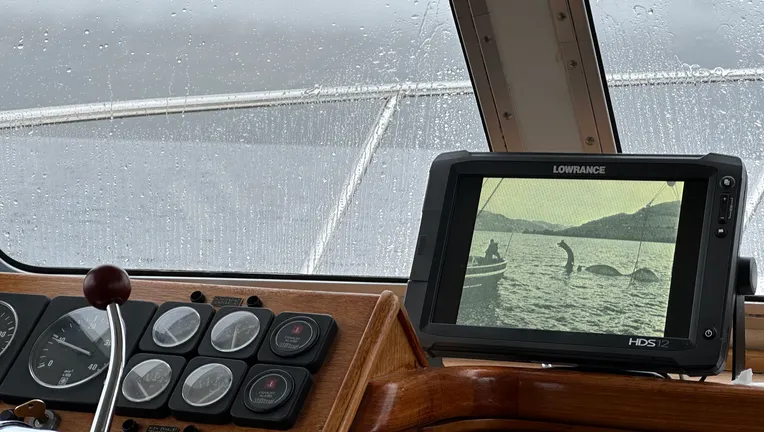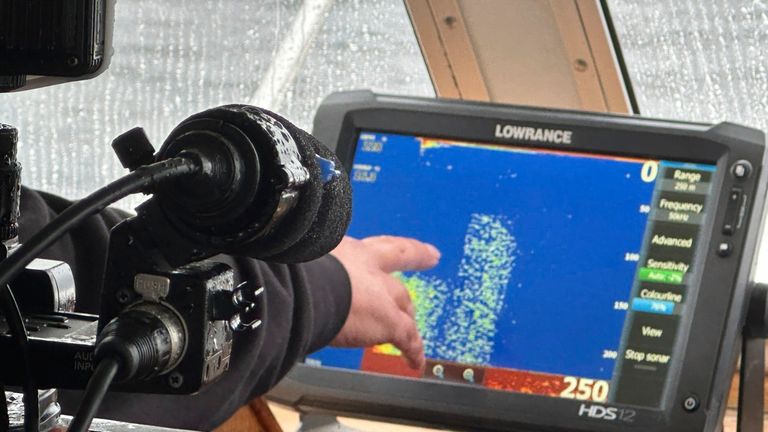On Saturday, academics and enthusiasts from all over the world descended upon the Scottish Highlands to begin the largest search for the Loch Ness Monster in half a century. To try and solve a question that has fascinated people for decades, the expedition sent out drones equipped with thermal imaging cameras, boats with infrared cameras, and a hydrophone to explore the depths of the ocean.
Paul Nixon, general manager of the Loch Ness Centre, told reporters, “There isn’t a corner of the globe you can go to where people haven’t heard of Nessie, but it is still one of our biggest questions — what is the Loch Ness Monster.”
I can’t put my finger on it. That there is a large object in Loch Ness is all I know. I’ve seen sonar scans of moving underwater objects the size of transit trucks.
Tatiana Yeboah, a 21-year-old French tourist who happened to be in Loch Ness at the same time as the hunt, said it had always been a goal of hers to see the lake.
To paraphrase Yeboah, “it could be myth, it could be real — I like to believe it is something halfway between,” Yeboah promised she wouldn’t let anything slip by while she was there by promising to keep a close eye on the lake.
The thermal scanners are a potentially game-changing tool, according to the search teams, who are hoping to spot any weird anomalies down there. Using the hydrophone, the team can listen for any strange noises that might be Nessie.
The freshwater loch is the largest lake in the United Kingdom, measuring 36 km in length and reaching a maximum depth of 240 metres.
Stone sculptures in the vicinity depict a mystery beast with flippers, suggesting that stories of a monster lurking in Loch Ness go back millennia.
The first written mention of the beast was in a biography of the Irish monk Saint Columba, written in the year 565 A.D.
Columba supposedly ordered the monster to retreat after it had assaulted a swimmer and was going to strike again.
In May of 1933, a couple driving along a brand-new lochside road reported seeing “a tremendous upheaval” in the water, according to the Inverness Courier.
The Loch Ness Centre in Drumnadrochit, close to Inverness, reports that there have been over 1,100 confirmed sightings of Nessie. Every year, the monster generates millions of pounds in tourist for Scotland.
Both professionals and amateurs have scoured the loch’s depths for years in search of the massive fish, hoping to catch a glimpse of the legendary sturgeon.
Some have hypothesised that the creature is actually a long-extinct marine reptile, perhaps even a plesiosaur. The Loch Ness Investigation Bureau conducted the largest search to that point in 1972, but found nothing.
Operation Deepscan sent sonar equipment over the loch’s width in 1987, claiming to have spotted a “unidentified object of unusual size and strength.”
In 2018, scientists conducted a DNA study of Loch Ness to learn more about the aquatic life there. Results suggested the presence of countless eels, but no huge animals such as plesiosaurs were present.
Nixon elaborated, “The weekend affords an opportunity to search the waters in a manner never before undertaken, and we can’t wait to see what we find.”
Loch Ness Monster dates back to around 565 AD
The Loch Ness Monster, often referred to as “Nessie,” is a legendary creature said to inhabit Loch Ness, a large freshwater lake in the Scottish Highlands. The creature is often described as a large aquatic creature with a long neck and humps that emerge from the water. Reports of Nessie date back centuries, but the legend gained significant attention and popularity in the 20th century.
The first recorded sighting of the Loch Ness Monster dates back to around 565 AD, when Irish missionary St. Columba is said to have encountered a creature in the waters of the loch. However, the modern legend of Nessie gained widespread attention in the 1930s when a series of alleged photographs and eyewitness accounts began to circulate.
The most famous photograph of Nessie, known as the “Surgeon’s Photograph,” was taken in 1934 by Robert Kenneth Wilson. It depicts a long-necked creature rising out of the water. This photograph fueled further interest and speculation about the existence of the Loch Ness Monster.
Over the years, there have been numerous reported sightings, photographs, and even sonar readings that enthusiasts claim provide evidence for the existence of a large unknown creature in Loch Ness. However, most of these pieces of evidence have been controversial and often subject to skepticism and scientific investigation.
Scientists and researchers have conducted various expeditions and studies to search for evidence of the Loch Ness Monster. These efforts have often involved the use of sonar technology, underwater cameras, and other advanced equipment. Despite these efforts, no definitive proof of Nessie’s existence has been found, and many of the sightings and photographs have been debunked as hoaxes or misidentifications of natural phenomena.
The Loch Ness Monster remains a popular and enduring legend, attracting tourists, researchers, and curious individuals from around the world. While there is no scientific evidence to support the existence of a large unidentified creature in Loch Ness, the legend continues to capture the imagination of people interested in mysteries and the unknown.
Keywords: loch ness monster video, loch ness monster story
⚠ Article Disclaimer
The above article is sponsored content any opinions expressed in this article are those of the author and not necessarily reflect the views of CTN News







